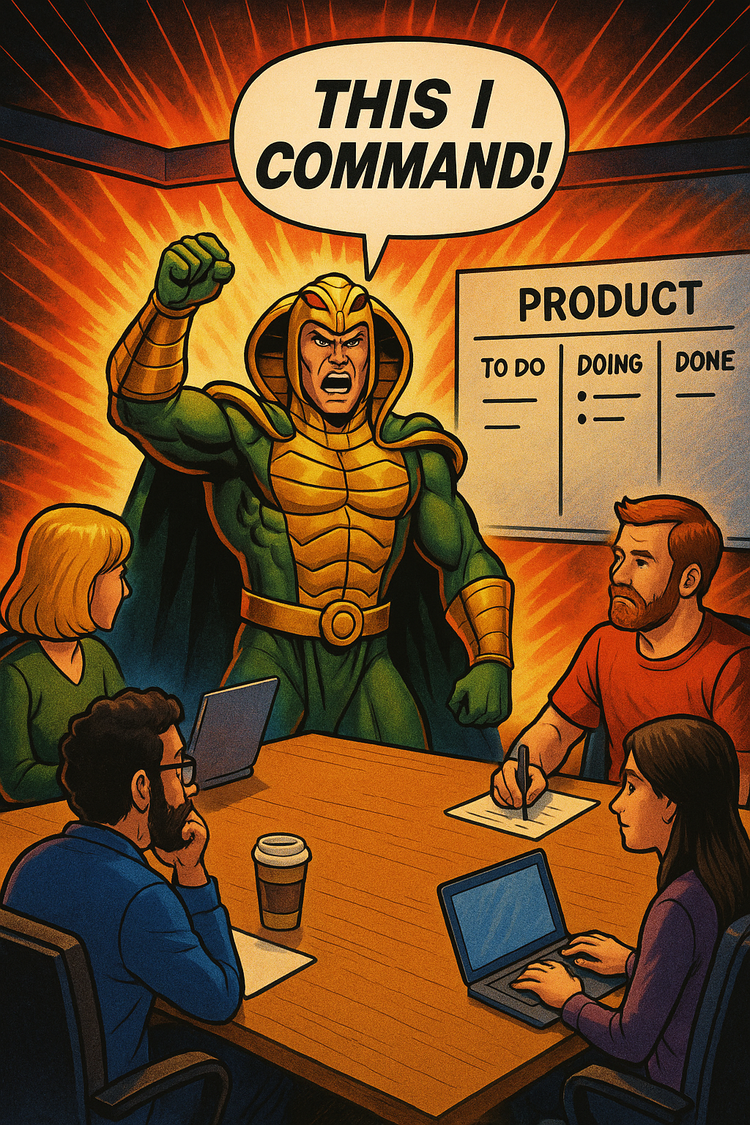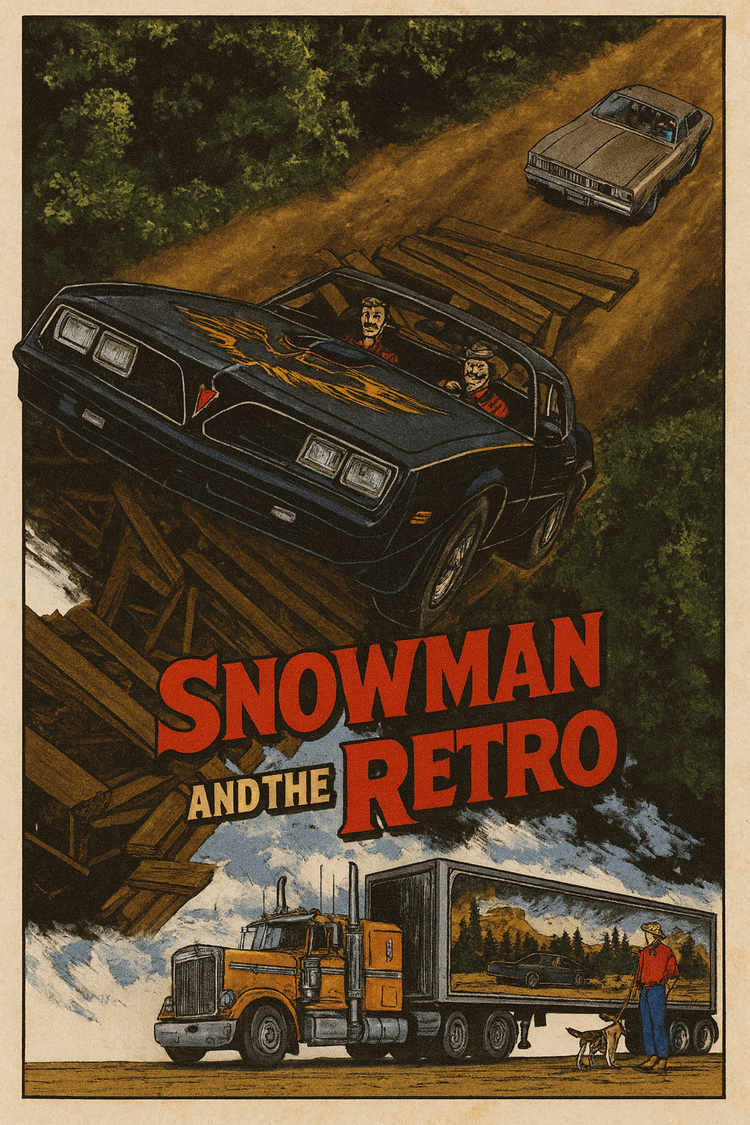Product: The Management – Villian Edition
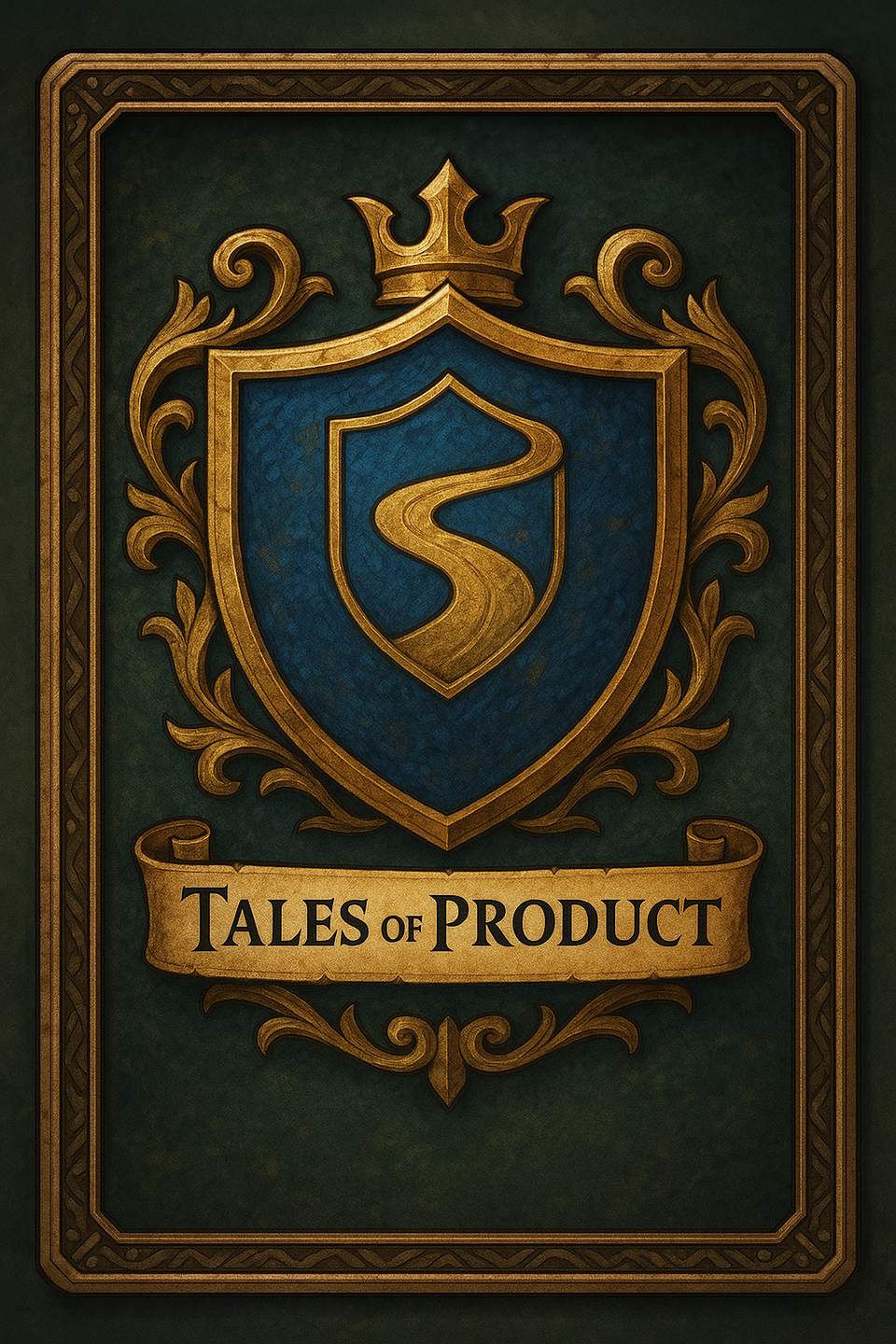
Card battles, childhood nostalgia, and villains that live in your roadmap
This weekend, while doing some spring cleaning, I came across a stack of old Magic: The Gathering cards my kids used to play with.
They’d spend hours building decks, casting spells, and debating the rules with their cousins as if their lives depended on it. I hadn’t thought about those games in years but something about seeing those cards got my thinking. A lot of the product problems we deal with daily: scope creep, missed requirements, zombie backlogs; could just as easily be cards in a deck.
So, I started sketching… One villain led to another… and a few hours later, Tales of Product: the collectible card game was born.
Here are five cards from the set; each one a familiar product villain you’ve probably faced, and how to beat them. Enjoy.
1. Scope Creep
The Endless Multitasker. The Feature Whisperer.
He never kicks down the door. He sidles in politely, “Just a small update,” he says. “We already promised it to sales.” One feature becomes two. Two become five. Before long, you’re staring at a bloated backlog and a diluted product.
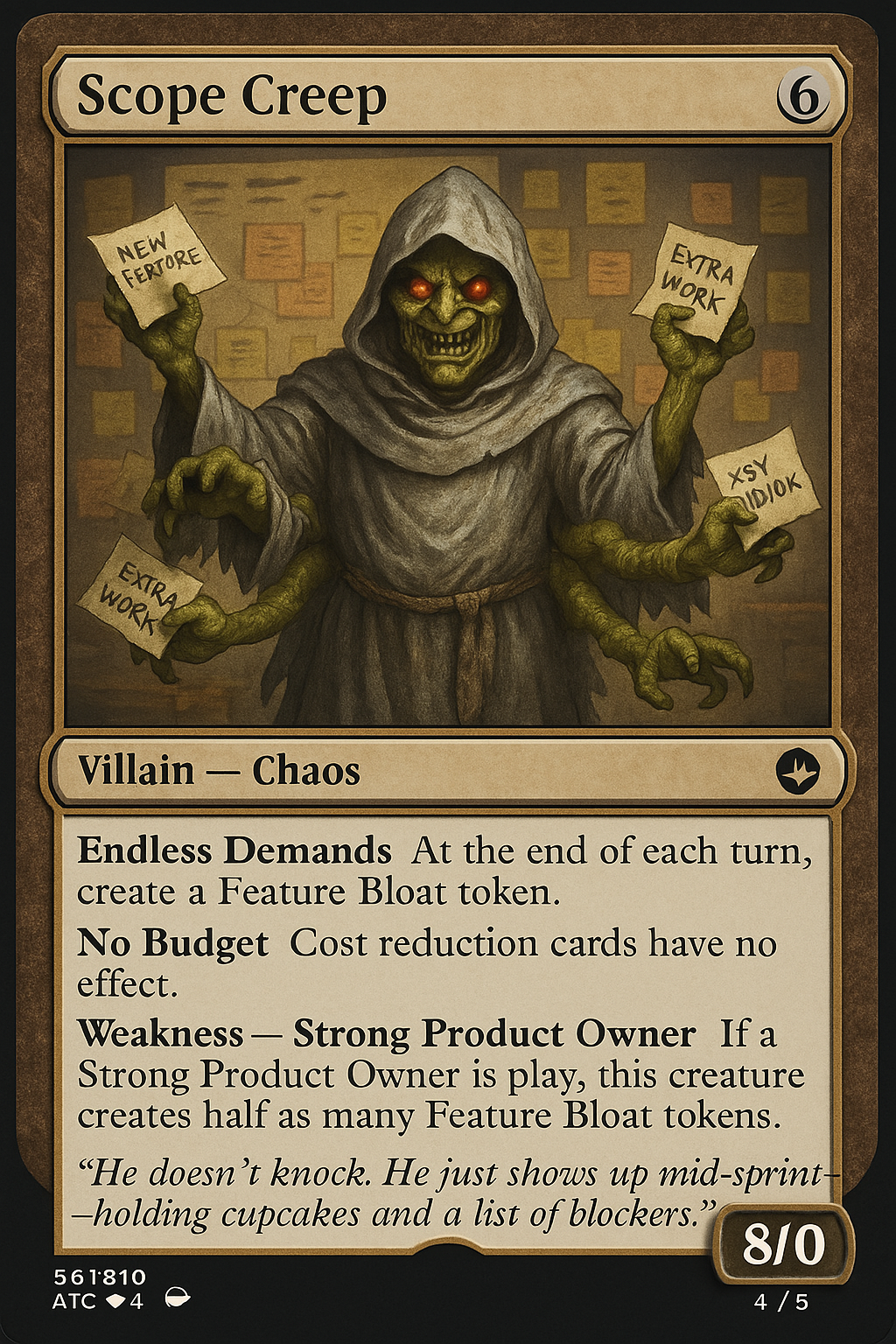
Key Moves:
- Endless Demands – Spawns Feature Bloat tokens each turn
- No Budget – Immune to cost-control measures
Weakness: A Product Owner who knows how to say no with documentation
How to Survive the Encounter:
- Hold regular scope review sessions tied to product goals
- Use a “feature request parking lot” to defer distractions
- Enforce a one-in, one-out policy for backlog items
- Practice saying: “Yes… and here’s what we’ll deprioritize”
2. Missed Requirements
The Silent Sprint Killer.
It doesn’t shout. It doesn’t charge. It waits, quietly, hidden inside your stories, disguised as “assumed functionality.” Everything seems fine until QA opens the door… and finds nothing behind it. It smiles. You panic.
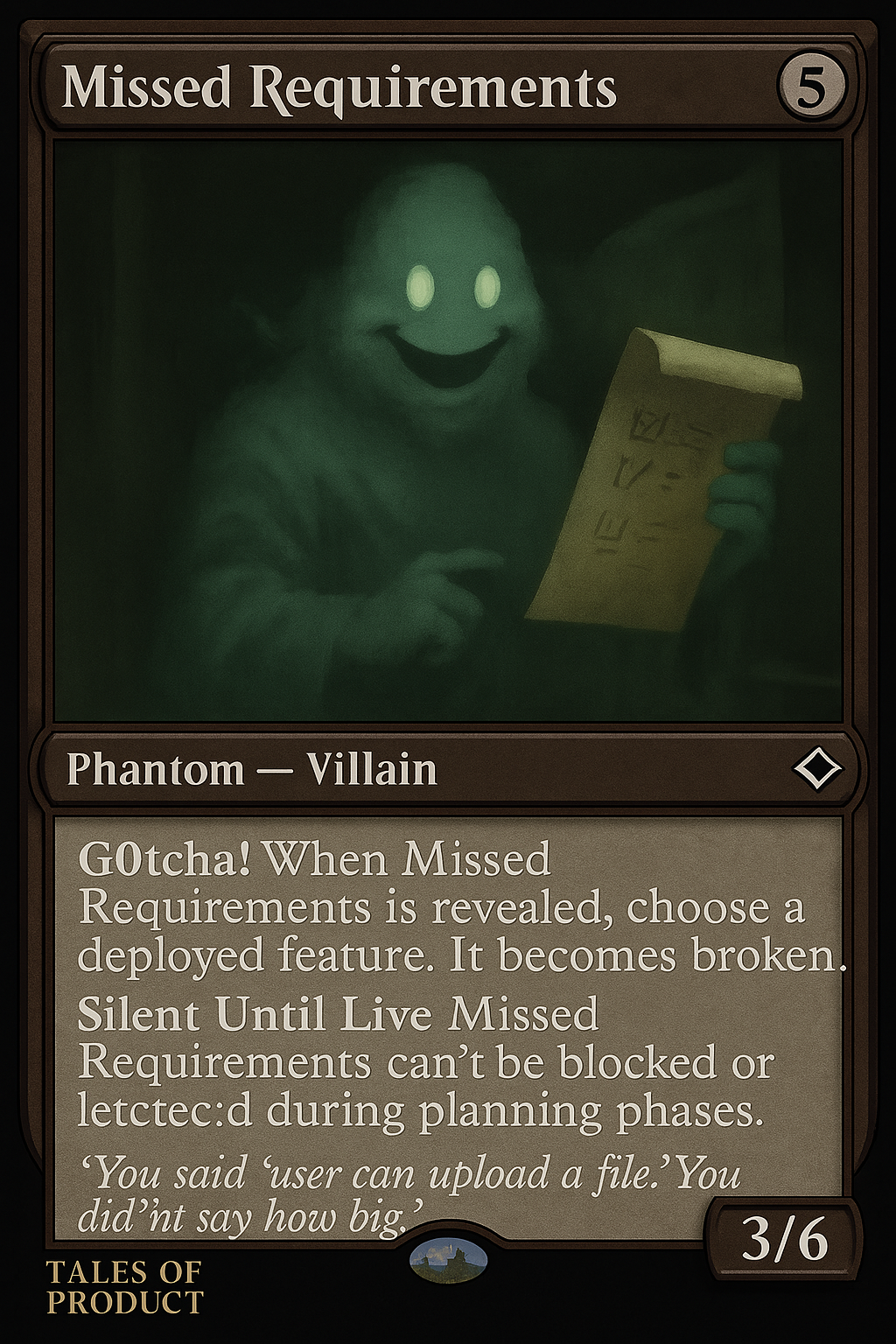
Moves:
- Gotcha! – Breaks deployed features upon reveal
- Silent Until Live – Immune to planning-phase detection
Weakness: Shared understanding before development begins
How to Survive the Encounter:
- Run pre-planning validation sessions with stakeholders and users
- Use detailed acceptance criteria templates with edge case prompts
- Write requirements using real scenarios:
“As a [user], when I [action], then [outcome].”
3. Bad UX
Looks Good. Hurts Deep.
She’s stunning at first glance; sleek UI, pixel-perfect spacing, and a prototype that wowed the execs. But behind the beauty is chaos: broken flows, confusing interactions, and users who never make it past the welcome screen. She doesn’t break the product. She breaks your trust.
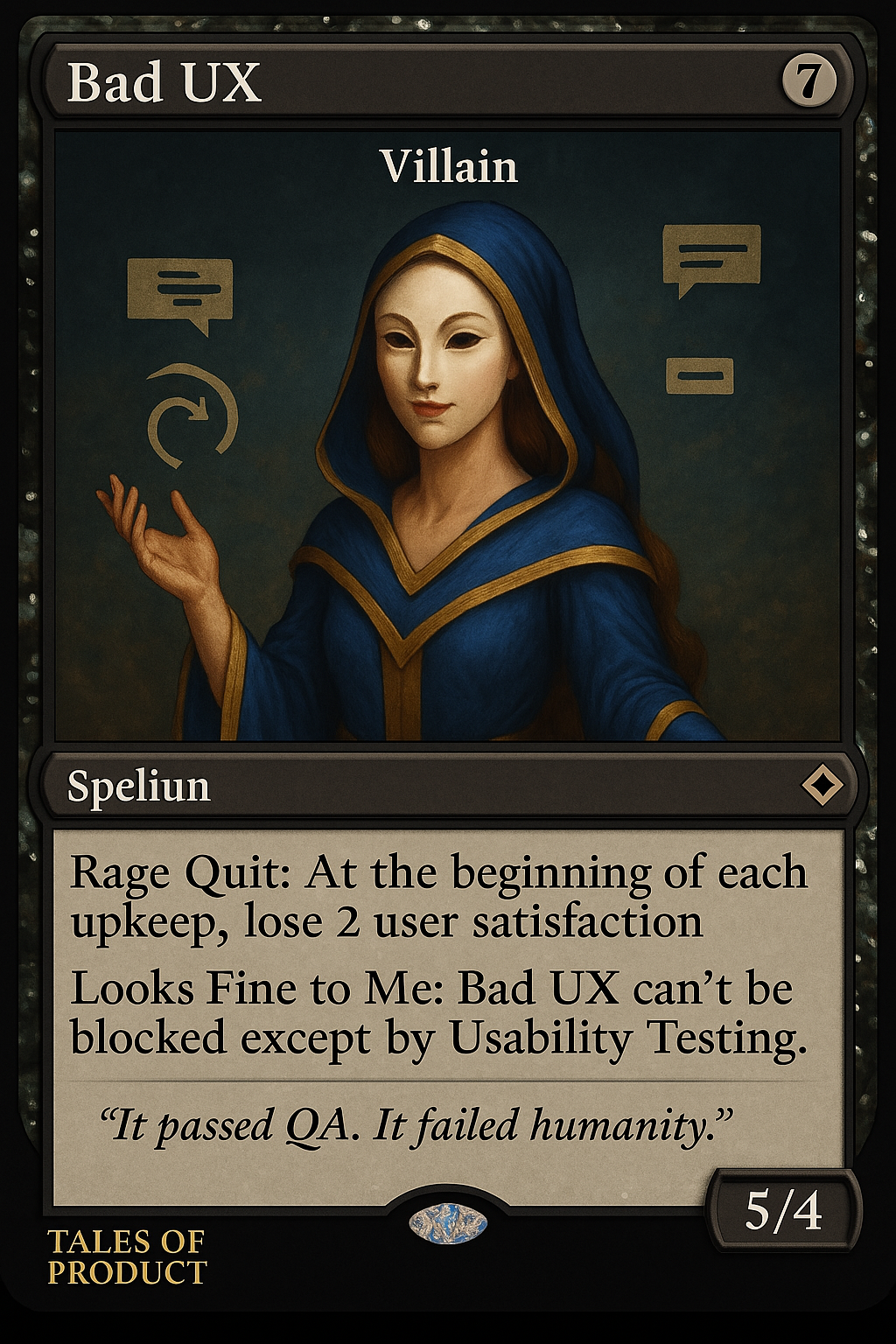
Moves:
- Rage Quit – Slowly drains user satisfaction every turn
- Looks Fine to Me – Blocks inspection unless usability tested
Weakness: Real user feedback, not stakeholder approval
How to Survive the Encounter:
- Run 5-second tests to catch flow-breaking friction
- Schedule regular usability sessions with real users, not just internal demos
- Track “UX debt” as part of sprint health metrics
- Tie every release to a specific usability KPI (task completion, error rate, etc.)
4. Executive Override
Brings Vision. Breaks Velocity.
He doesn’t play the game. He rewrites the rules. Mid-sprint. Armed with a title, a tablet, and an idea that just came to him in the shower, Executive Override lands like a thunderclap... cancelling epics, spawning pet projects, and leaving your velocity in ruins.
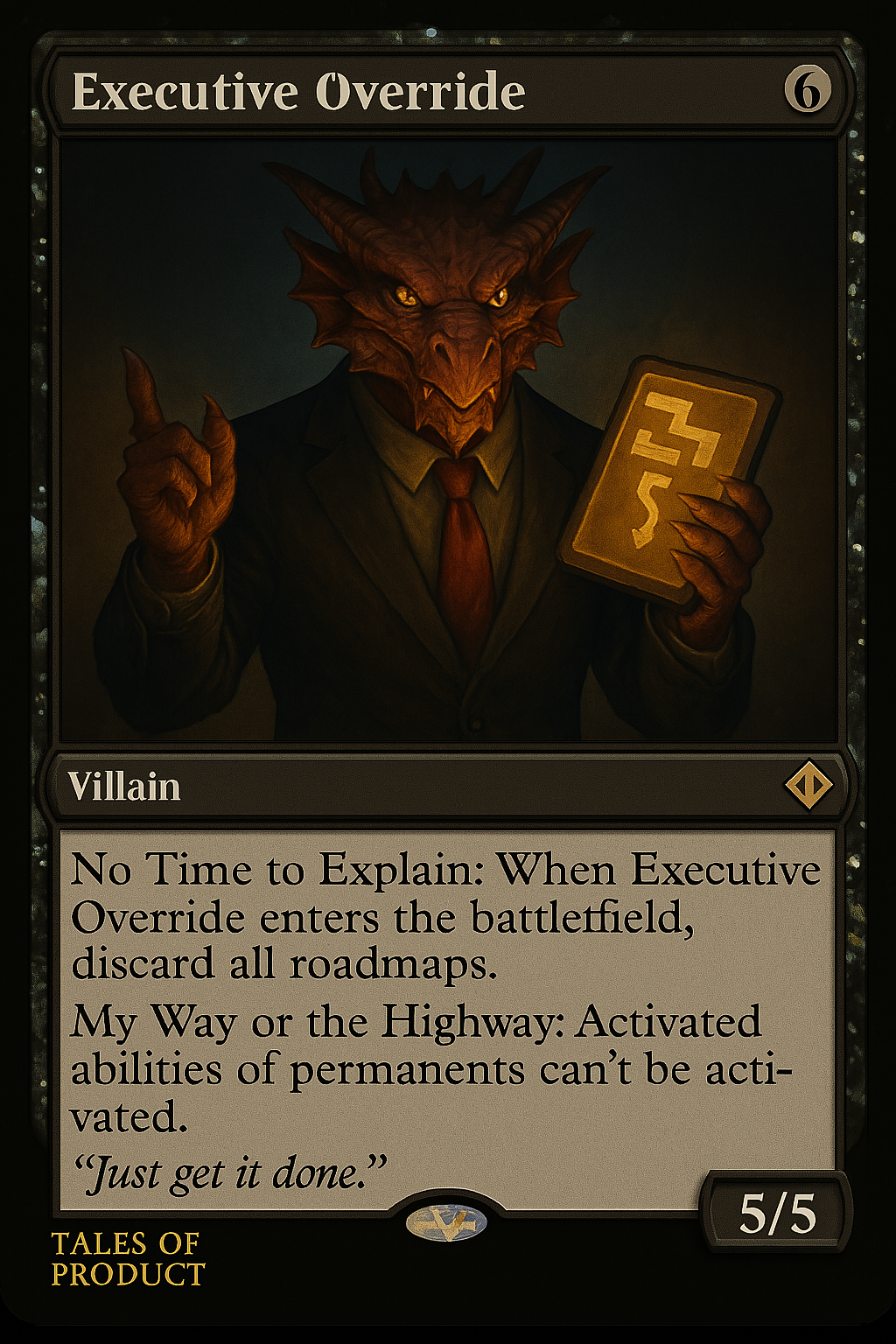
Moves:
- No Time to Explain – Cancels current priorities and injects a “Pet Project”
- My Way or the Highway – Immune to prioritization frameworks and team consensus
Weakness: A business case with ROI and a united team front
How to Survive the Encounter:
- Require impact assessments for all new initiatives
- Establish regular cadence of communication with Sr leadership
- Quantify trade-offs: “Here’s what we’re sacrificing if we do this now”
5. Zombie Backlog
It’s Old. It’s Irrelevant. It’s Still Alive.
Buried deep in your JIRA graveyard, this ticket was created during an early brainstorm, possibly in a different fiscal year. No one remembers what it was for. No one dares delete it. And every planning session someone says, “We should circle back to this.”

Moves:
- Undeath – Resurfaces even after being closed
- Eyes Glaze Over – Saps team morale and focus every sprint
Weakness: Ruthless backlog hygiene and strategic alignment
How to Survive the Encounter:
- Hold quarterly “defend or delete” purges
- Flag tickets older than 90 days for review
- Move dead tasks to a “backlog cemetery” for historical reference
- Cap backlog size—and enforce it like a performance metric
Hex-proof
Every product team battles these villains at some point. They can sneak in quietly. Others arrive mid-sprint, armed with a vision and zero context. And a few, like Zombie Backlog, were probably lurking in your board before you even joined the company.
I hope you enjoyed the lineup. Have fun with it and keep these cards handy for your next product planning match.
Hey... it could be worse.
At least you didn’t have to see me in action figure packaging 😊


